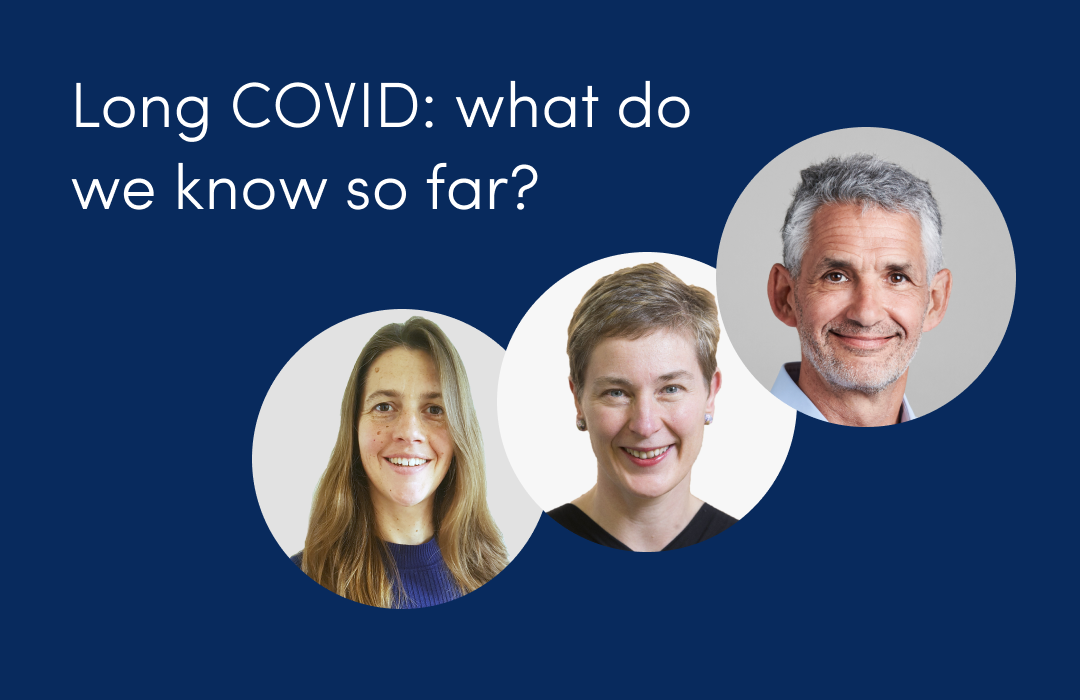
COVID bounces back as cases start to rise
August 26, 2021

This article has not been updated recently
According to ZOE COVID Study incidence figures, there are currently 51,961 new daily symptomatic cases of COVID in the UK on average, based on PCR and LFT test data from up to five days ago [*]. This is up 19% from 43,693 new cases last week. It’s estimated there are currently 15,309 new daily symptomatic cases in fully vaccinated people in the UK, cases in this group have been rising steadily for the last week and now make up 29.4% of the total new daily cases (Graph 1).
New cases are highest in the 18-35 age groups, closely followed by the 0-18 year olds, which suggests that it’s the younger populations who are behind the current rises in cases (Graph 2).
Graph 3 plots the ZOE prevalence figures alongside confirmed cases, which shows that the uptick in cases is also being seen in the confirmed cases.
The ZOE data is always a week ahead of the other surveillance surveys and continues to work as an early warning signal, so it is expected that this rise will be reflected in the ONS and REACT-1 figures in the weeks to come (Graph 4).
In terms of prevalence, on average 1 in 100 people in the UK currently have symptomatic COVID (Table 1).
The UK R value is estimated to be 1.1 and regional R values are; England, 1.1, Wales, 1.1, Scotland, 1.2 (Table 1) confirming that cases are on the rise in almost all regions of the UK.
According to the latest analysis from ZOE, it’s estimated that 870 cases a day will go on to experience symptoms for longer than 12 weeks, this is the predicted Long COVID incidence rate. Graph 5 compares the Long COVId incidence rates of this third wave with the second wave and indicates that the probability of long COVID now is much lower than the previous wave.
At present the probability of contracting long COVID is much higher in younger people. This probability is not related to risk, as research has shown that older people are more at risk of long COVID but it is driven by the fact that more young people are contracting COVID now compared to older generations. What this means in real terms is that lots of younger people are now suffering from COVID related symptoms for more than 12 weeks, and this is why vaccination and being sensible is important for this group.
The ZOE COVID Study incidence figures (new symptomatic cases) are based on reports from around one million weekly contributors and the proportion of newly symptomatic users who have received positive swab tests. The latest survey figures were based on data from 25,876 recent swab tests done between 7th and 21st August 2021.
Professor Tim Spector, lead scientist on the ZOE COVID Study app, comments on the latest data:
“Unfortunately, we’re back in a position where cases, hospitalisations and deaths are all going up and the UK has the highest rates of COVID in Europe, despite our superior vaccination rates. The main difference between the UK and Europe is our lack of restrictions. In many parts of Europe, people are still wearing face coverings and observing some social distancing. In the UK, where we eagerly declared ‘freedom’ from COVID and did away with even the most basic social measures, COVID has found an opportunity to spread. As kids head back to the classrooms, there’s a good chance cases will continue to rise from here.
According to data from the ZOE COVID Study, fully vaccinated people now make up nearly 30% of positive cases and so it’s critical to be aware of the symptoms of COVID after vaccination. Our data shows post-vaccination infections are much more like a cold than the flu, with the top symptoms being runny nose, headache, sneezing, sore throat and loss of smell. We’re again calling on the government to add these cold-like symptoms to their list to help educate the public and catch more cases.”
Graph 1. The ZOE COVID Study UK incidence figures results over time; total number of new cases and new cases in fully vaccinated

Graph 2. Incidence figures by age groups

Graph 3. A comparison of prevalence figures; ZOE COVID Study, and confirmed cases

Graph 4. A comparison of prevalence figures; ZOE COVID Study, and other COVID surveillance studies

Graph 5. Predicted long covid incidence comparing 2nd wave and 3rd wave

Table 1. Incidence (daily new symptomatic cases)[*], R values and prevalence regional breakdown table

Map of UK prevalence figures












.png)


.jpg)














.png)







%202.png)
.png)


















.png)




%20(1).png)


